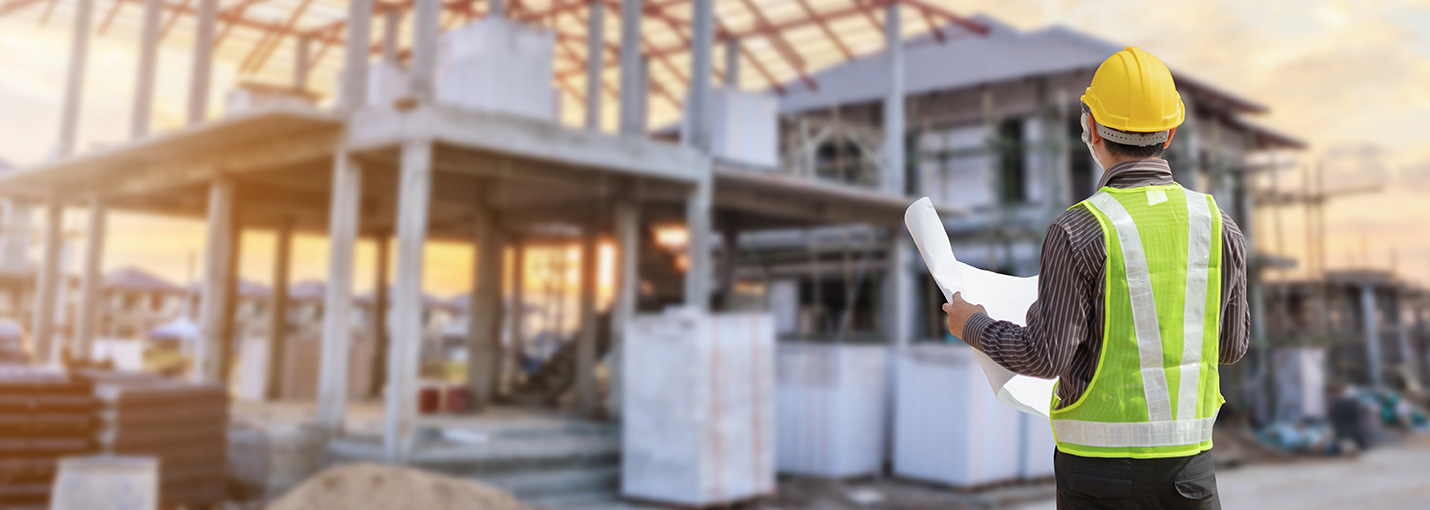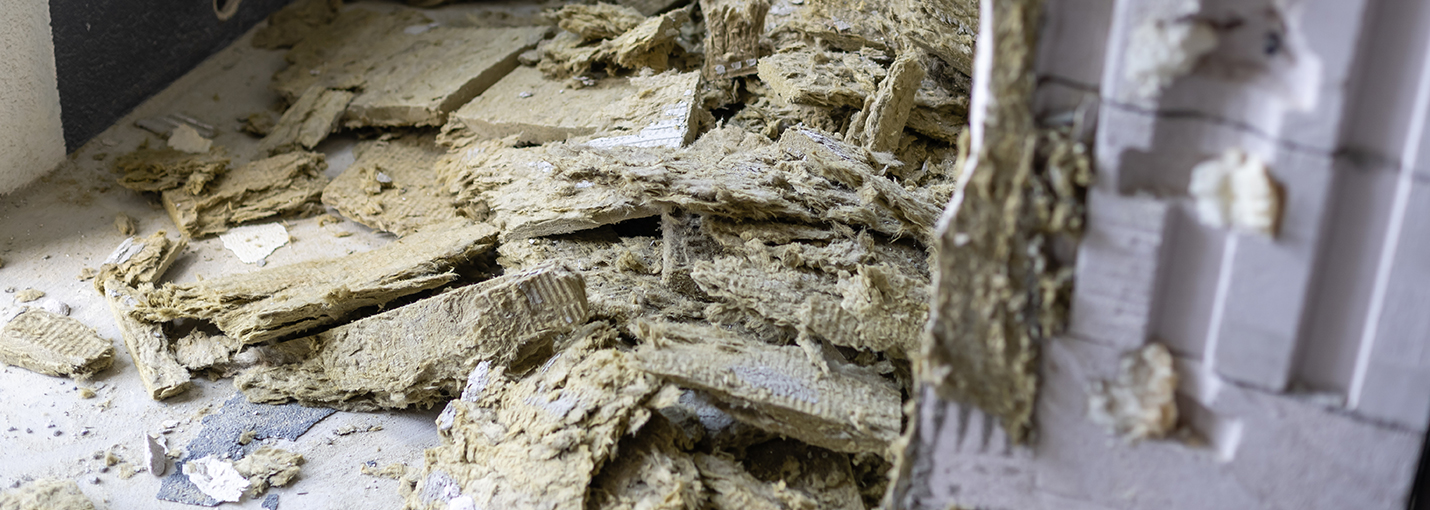Before the 1980s, asbestos was a significant driving force behind industrialization in many countries, including the U.S. That is due, in large part, to the fact that it came with a wide range of potential applications, and was, therefore, be used in a variety of ways.
At the time, the public didn’t understand the risks of using asbestos, which wouldn’t become widely publicized until years later. Of course, everything changed in the mid-1980s when awareness of the dangers of asbestos – long covered up by companies turning a substantial profit – grew, and the U.S. Environmental Protection Agency (EPA) stepped in to regulate it.
!
Si cree que estuvo expuesto al asbesto, incluso cuando era niño, hable con un proveedor de atención médica sobre pruebas y exámenes para ayudar a diagnosticar cicatrices pulmonares y detectar enfermedades relacionadas con enfermedades relacionadas con el asbesto.
Asbestos: From miracle mineral to major threat
As a result, many products manufactured before this time contain the once-hailed “miracle mineral,” and that means that individuals are still at risk of exposure. The construction industry is one of the biggest culprits. Asbestos fibers were used in everything from flooring, walls, ceilings tiles, roofs, wiring, and plumbing because of the mineral’s inexpensiveness, durability, pliability, and heat resistant properties.
  |
| Casi todos los edificios construidos antes de mediados de la década de 1980 contenían productos y materiales de construcción de asbesto. |
  |
In today’s rapidly growing society where demolitions are part and parcel of everyday life, it’s vital that older propiedades are properly inspected before moving forward. Otherwise, friable asbestos might easily be ingested, causing significant health issues, and property owners could open themselves up to asbestos litigation.
Compartir una casa o un vehículo con alguien que usa ropa contaminada con asbesto lo pone en riesgo de contraer enfermedades relacionadas con el asbesto.3 1 2 3 4 5
What are the Dangers of Asbestos?
Asbestos is a mineral that is harmless in its natural state because it has yet to be disturbed. However, once mined and processed, it is converted into fibers, which are highly friable, meaning they can travel via air, water, or soil. Once these fibers are ingested, they lodge against organ tissues and lead to irritation, inflammation, and injury. With accumulation, diseases such as asbestosis, mesothelioma, and many different forms of cancer can occur.
“Por lo general, quienes desarrollan enfermedades relacionadas con el asbesto no muestran signos de enfermedad durante mucho tiempo después de la exposición”.Fuente: Instituto Nacional del Cáncer (NIH)6 |
The problem with asbestos-related illnesses is that they can take a considerable amount of time to develop, with a typical symptom latency period of between 30-50 years. By the time symptoms are evident, asbestos has been lodged in the body long enough to cause significant damage, and diseases are likely to have already progressed.
Asbestos related diseases can take 20 to 50 years to appear.
The latency of symptoms is one of the primary reasons why the dangers of asbestos have been gaining attention in recent years. Those exposed prior to the large-scale EPA ban in the ‘80s are just now exhibiting signs of disease. These individuals likely came into contact with the microscopic fibers in everyday life during asbestos’ heyday, and remained unaware of the issues they’d face until long after the fact.
El asbesto no tiene sabor ni olor.
Es posible que no sepa que lo está respirando.




Demolishing an old house that may contain asbestos: Proceed with caution
Due to the risks of asbestos, it is imperative that any demolition of a property built prior to the 1980s proceeds with caution. For starters, a property owner shouldn’t handle the demolition themselves unless they just so happen to be a licensed asbestos abatement contractor. Proper handling of asbestos is needed before demolition to avoid endangering lives. And aside from personal, moral, and societal responsibilities, doing so could also open an owner up to litigation.
“La evidencia general sugiere que no existe un nivel seguro de exposición al asbesto”. no hay nivel seguro de exposición al asbesto."Fuente: Instituto Nacional del Cáncer (NIH)7 |
There are federal, state and local laws regarding the appropriate handling and disposal of asbestos, which need to be followed in order to guarantee health and safety as well as EPA compliance. Moreover, if a demo or renovation project is being done in order to sell a property, improper removal could negatively impact the sale. Obtaining certification proving that asbestos has been entirely removed will help.
“Algunas fibras de asbesto pueden pasar por alto... las defensas naturales de su cuerpo... y alojarse en lo profundo de sus pulmones. Esas fibras pueden permanecer en su lugar durante mucho tiempo y es posible que nunca se eliminen”.Fuente: Asociación Americana del Pulmón |
Steps to take when demolishing a house to prevent asbestos exposure
Here are the steps that should be taken in order to test for asbestos and remove any present before a demo or renovation proceeds:
1. Conduct an asbestos audit.
The first step is to determine whether asbestos is present, and if so, how much. This is essentially a risk assessment report conducted by a licensed asbestos auditor. Only companies that are accredited by the EPA are qualified to carry out an asbestos audit – in other words, a general home inspector may not carry the credentials to do so.
“Todas las formas de asbesto son cancerígenas para los humanos”. 8
EPA-accredited asbestos audits are mandated by federal, state, and sometimes local regulations, meaning there are laws that require an owner to identify the presence of any asbestos-containing materials (ACMs) prior to demolition. The approach to removal differs depending on the severity of the information recorded in the audit, which will sub-divide the issue into categories – either Category I or Category II, non-friable ACM.
¿Califica usted para una compensación?
Descubra rápida y fácilmente cómo estuvo expuesto buscando en WARD, la base de datos de asbesto más grande del planeta.
BÚSQUEDA GRATUITA >2. Contact an asbestos lawyer.
It may seem extreme to get a lawyer involved. However, this is one of the first steps that should be taken in any asbestos-related situation. As mentioned previously, there are various federal, state, and local regulations on the handling of ACMs. Therefore, it’s important to have an attorney confirm legalities are followed every step of the way.
A lawyer can also conduct a legal risk assessment to help a property owner determine whether demoing is worthwhile. Essentially, asbestos attorneys can help ensure a person understands their legal rights and is compliant every step of the way.
3. Conduct a thorough assessment of removal companies.
This is perhaps the most intensive part of the process, because it’s important for a property owner to do their homework when it comes to selecting an asbestos auditor and abatement contractor, and this can take time. Shopping around and receiving multiple quotes while vetting companies can help ensure the job is done right and for the right price.
4. Conduct an asbestos removal review.
After removal, a review should be done to confirm a property has been properly remediated. The company that conducted the audit could also conduct a review and will ascertain whether the ACMs have been properly disposed of, per regulations. If everything is up to par, the company will issue an asbestos clearance certificate and demolition can commence.
Más de $ 30 mil millones todavía están disponibles (sin demandas. Sin tarifas a menos que reciba dinero. Sin riesgos). Haga su reclamo.   |
The bottom line on asbestos before demolishing an old house
To keep you and your family healthy and out of court, bring in professionals to handle asbestos auditing and removal prior to demolition. The advice of a seasoned asbestos attorney, such as those at AsbestosClaims.law, can prove to be invaluable throughout this process. Accreditation is also the most important thing to consider when hiring a company for asbestos audit, removal, or review, and proper documentation is key. Whether it is the audit results, a company’s accreditation certificate, or an asbestos clearance certificate, obtaining each will help prove a demolition project was done in compliance with federal, state, and local regulations.
AsbestosClaims.Law
En AsbestosClaims.Law, nuestra misión de asegurar una compensación para las víctimas del asbesto es más que profesional;es personal.
Nuestro fundador, Justinian C. Lane, conoce de primera mano los efectos devastadores del asbesto.
Tanto sus abuelos como su padre, todos trabajadores del asbesto, fallecieron de cánceres inducidos por el asbesto sin darse cuenta de su elegibilidad para juicios por asbesto u otras formas de compensación.
Nuestro objetivo es evitar tales trágicos descuidos informando y guiando a las víctimas y sus familias a través de sus opciones legales.
Si usted o sus seres queridos han sufrido como resultado de la exposición al asbesto, podría ser elegible para una compensación considerable. Estos fondos podrían cubrir tratamientos médicos, servicios de remoción de asbestos y salvaguardar su salud.
Además, los fideicomisos de asbesto ofrecen una compensación sin necesidad de un juicio, brindando un camino más rápido y sencillo hacia la justicia.
Comuníquese con nosotros en [email protected] o (206) 455-9190 para obtener ayuda con su reclamo. Ofrecemos escucha compasiva, explicaciones claras y no cobramos un centavo a menos que ganemos su caso.
Más allá de las demandas legales, también asesoramos sobre discapacidad de veteranos, seguridad social y protección laboral como compensación de trabajadores, FELA, y La ley de Jones para trabajadores marítimos.
No hay riesgo ni costo para conectarse con nuestro equipo experimentado sobre sus derechos. Nuestro compromiso con su bienestar significa que no cobramos honorarios a menos que reciba una compensación.
| Para más consultas o inquietudes sobre el asbesto, explore nuestro sitio web y página de YouTube, con infografías, videos y respuestas a preguntas comunes sobre temas relacionados con el asbesto. |
También presentamos WARD, la base de datos de investigación mundial sobre el asbesto. Es el recurso más completo de información relacionada con el asbesto.
WARD ayuda a identificar posibles escenarios de exposición, productos que contienen asbesto y puede indicar los tipos y posibles montos de compensación que puede tener derecho a recibir.
No te demores — ponerse en contacto Con nosotras hoy!
Scholarly Source:Understanding asbestos management and removal. , Tribich, J. (2021). Built Environment Journal.
1 Anua, S.M., Semple, S., Shakri, S.F.M., Safuan, S., Mazlan, N. and Asri, A.A.M., 2019. A review of the take-home exposure pathway of workplace hazards. International Journal of Medical Toxicology & Legal Medicine, 22(3and4), pp.13-19.
2 Ferrante, D., Bertolotti, M., Todesco, A., Mirabelli, D., Terracini, B. and Magnani, C., 2007. Cancer mortality and incidence of mesothelioma in a cohort of wives of asbestos workers in Casale Monferrato, Italy. Environmental Health Perspectives, 115(10), pp.1401-1405.
3 Miller, A., 2005. Mesothelioma in household members of asbestos‐exposed workers: 32 United States cases since 1990. American journal of industrial medicine, 47(5), pp.458-462.
4 Reid, A., Heyworth, J., De Klerk, N. and Musk, A.W., 2008. The mortality of women exposed environmentally and domestically to blue asbestos at Wittenoom, Western Australia. Occupational and environmental medicine, 65(11), pp.743-749.
5 İşten, B.H.S.T.O. and Maruziyetler, E.T., 2021. Exposures Moved from Work to Home as a Public Health Hazard.
6 National Cancer Institute (NIH), Hoja informativa sobre asbesto.
7 National Cancer Institute (NIH), Hoja informativa sobre asbesto.
8 IARC Working Group on the Evaluation of Carcinogenic Risks to Humans. Arsenic, metals, fibres, and dusts. IARC Monographs on the Evaluation of Carcinogenic Risks to Humans. 2012 ;100(Pt C):11-465. PMID: 23189751.




